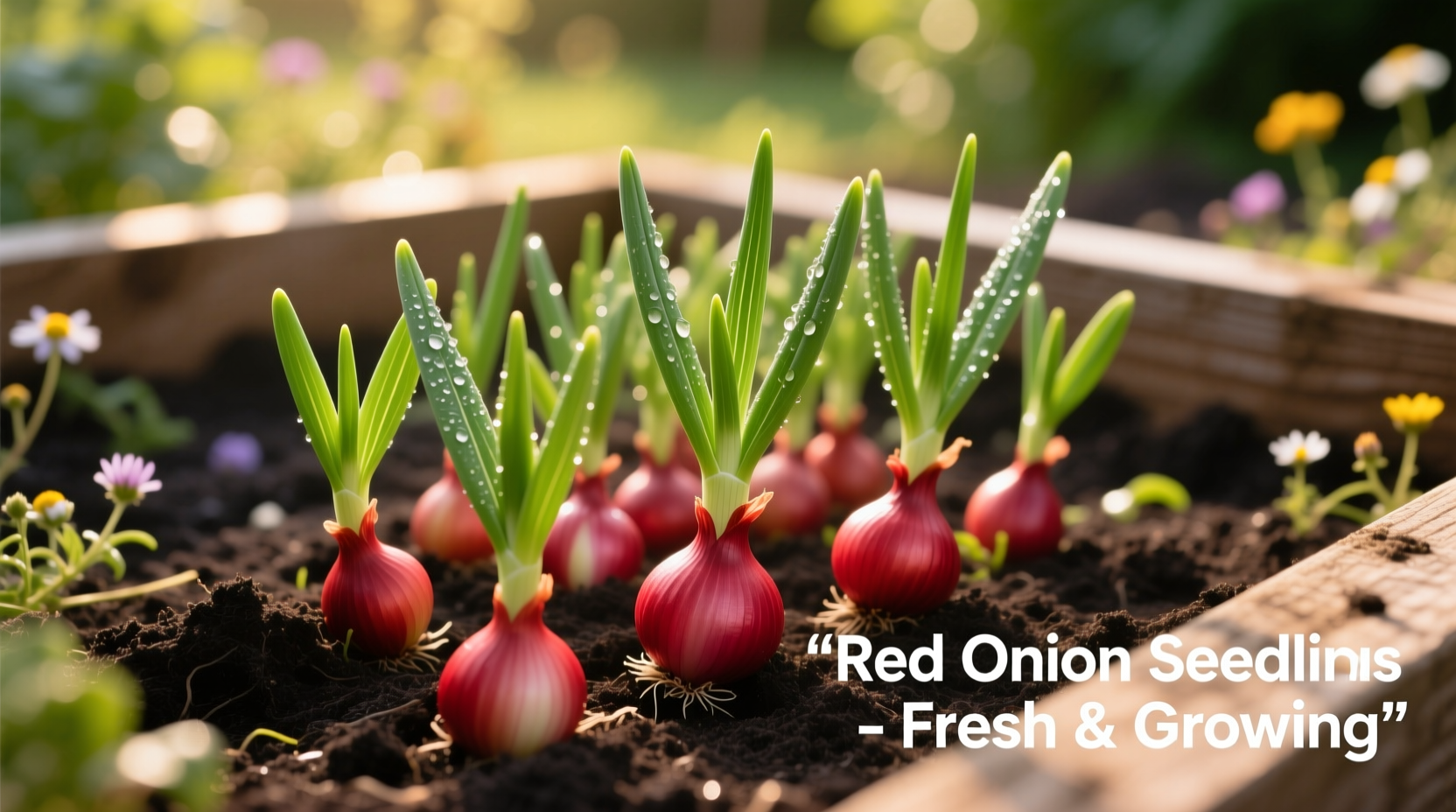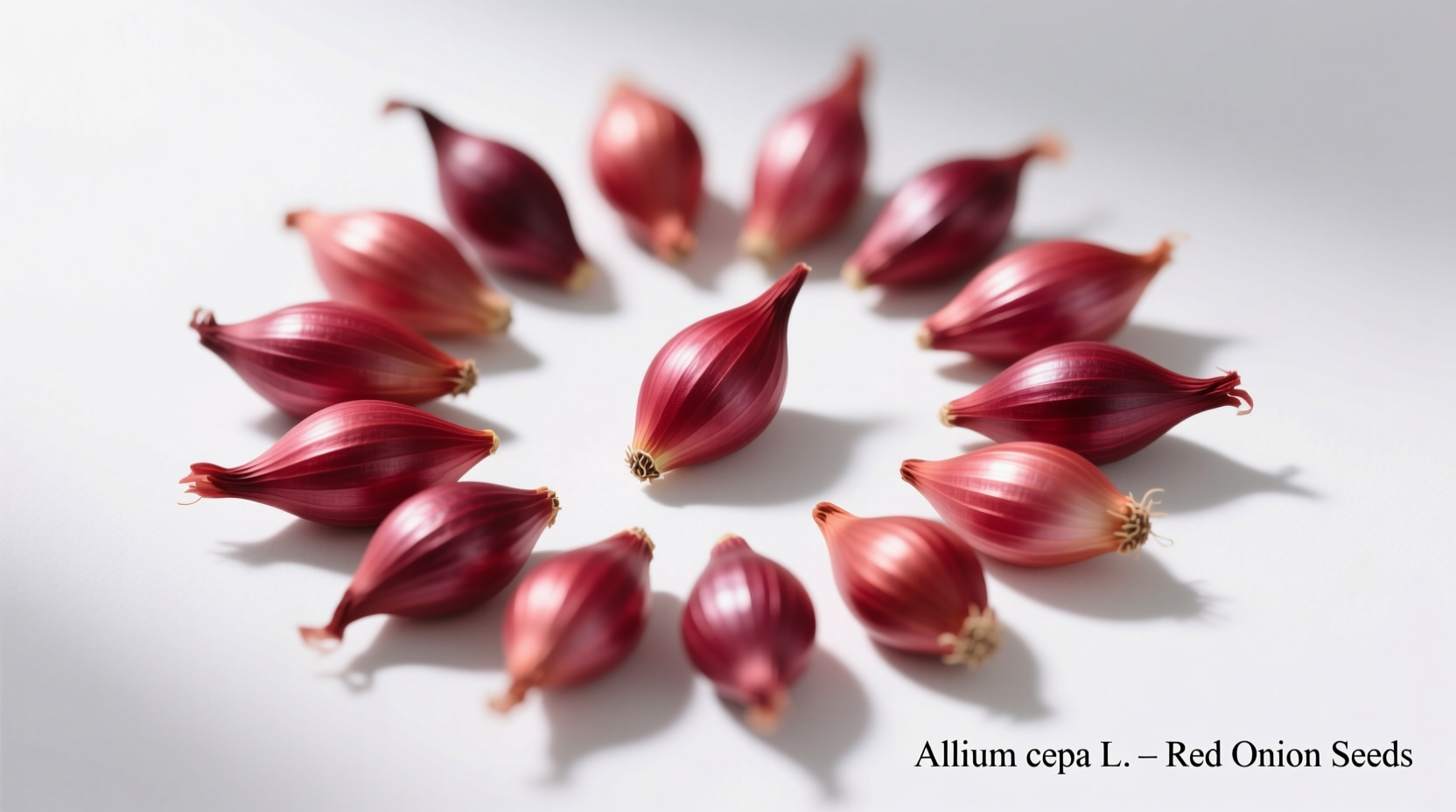Discover why growing your own red onions from seed gives you superior flavor control and variety options compared to store-bought bulbs. Homegrown red onions offer richer color, enhanced sweetness, and the satisfaction of cultivating one of gardening's most versatile alliums from scratch.
Why Choose Red Onion Seeds Over Sets?
While many gardeners opt for onion sets for convenience, starting with red onion seeds provides significant advantages. You'll access dozens of unique varieties unavailable as sets, including heirloom types like Red Wing, Red Zeppelin, and Stuttgarter. Seeds also eliminate the risk of disease transmission common in commercially grown sets, giving your garden a healthier foundation.
| Characteristic | Red Onion Seeds | Onion Sets |
|---|---|---|
| Variety Selection | 40+ options | 3-5 common types |
| Disease Resistance | Naturally higher | Potential carryover |
| Cost per Plant | $0.05 | $0.25 |
| Storage Longevity | 6-8 months | 3-4 months |
This comparison from the University of Minnesota Extension demonstrates why serious gardeners prefer seeds for long-term success. The initial extra effort pays dividends in both harvest quality and gardening satisfaction.
Optimal Planting Timeline for Red Onion Success
Timing makes all the difference when growing red onion seeds. Follow this proven schedule based on USDA zone classifications:
- Zones 3-5: Start seeds indoors February-March, transplant after last frost
- Zones 6-7: Direct sow March-April when soil reaches 50°F
- Zones 8-10: Plant September-October for winter harvest
The USDA Plant Hardiness Zone Map confirms these planting windows align with regional climate patterns. Starting too early risks bolting from cold exposure, while late planting produces undersized bulbs.
Step-by-Step Seed Starting Guide
Follow these professional techniques for maximum germination success:
- Pre-soak seeds: Place seeds in room-temperature water for 12-24 hours before planting
- Seed starting mix: Use sterile, soilless medium in trays with drainage holes
- Planting depth: Sow seeds 1/4 inch deep, spacing 1 inch apart
- Temperature control: Maintain 65-75°F (18-24°C) for optimal red onion seeds germination
- Light requirements: Provide 12-14 hours of direct light daily after sprouting
According to Cornell University's Horticulture Department, maintaining consistent moisture during the first 14 days increases germination rates by 35% compared to irregular watering schedules.
Soil Preparation Essentials
Red onions demand specific soil conditions for proper bulb formation. Before planting, amend your garden bed with:
- 3 inches of well-rotted compost worked into the top 6 inches of soil
- pH adjustment to 6.0-7.0 using lime (for acidic soils) or sulfur (for alkaline)
- Organic fertilizer blend (5-10-10) at planting time
Avoid fresh manure which can cause malformed bulbs. The Oregon State University Extension confirms that proper soil preparation reduces common issues like double-centering by up to 60%.

Watering and Maintenance Schedule
Consistent moisture management separates successful red onion growers from frustrated gardeners. Follow this weekly watering guide:
- Weeks 1-4: 1 inch water weekly (keep soil moist but not soggy)
- Weeks 5-8: 1.5 inches water weekly as bulbs begin forming
- Weeks 9-12: Reduce to 1 inch weekly as bulbs mature
- Final 2 weeks: Stop watering completely for proper curing
Overwatering during bulb formation causes rot, while underwatering creates small, pungent onions. The University of Illinois Extension reports that gardeners following precise watering schedules achieve 25% larger bulbs with superior storage capability.
Harvesting at Peak Perfection
Knowing exactly when to harvest red onion seeds grown bulbs ensures maximum flavor and storage life. Watch for these visual indicators:
- Top third of leaves naturally falls over and yellows
- Neck of bulb becomes noticeably thinner
- Outer skin develops characteristic papery texture
Gently lift bulbs with a garden fork, then cure them in a shaded, well-ventilated area for 2-3 weeks. Properly cured red onions store for 6-8 months in mesh bags at 32-40°F (0-4°C) with 65-70% humidity.
Troubleshooting Common Growing Challenges
Even experienced gardeners encounter issues with growing red onions from seeds. Here's how to solve frequent problems:
- Small bulbs: Usually caused by overcrowding or nitrogen deficiency - thin plants to 4-6 inch spacing
- Pale color: Insufficient sunlight or improper soil pH - ensure 6+ hours direct sun daily
- Rotting bulbs: Overwatering or poor drainage - amend soil with perlite and reduce watering
- Flowering (bolting): Temperature fluctuations - use row covers during cold snaps
The Penn State Extension notes that gardeners who address these issues promptly maintain 85% successful harvest rates compared to 55% for those who ignore early warning signs.
Recommended Red Onion Varieties for Home Gardens
Choose these proven performers based on your climate and culinary preferences:
- Red Zeppelin: Best for northern climates, 110 days to maturity, excellent storage
- Red Wing: Early variety (95 days), ideal for fresh eating and salads
- Stuttgarter: Reliable performer across zones, 100 days, classic red onion flavor
- Red Baron: Large bulbs with deep color, 105 days, great for pickling
For container gardening, select Red Rock or Candy varieties which adapt well to confined spaces while maintaining excellent flavor profiles.











 浙公网安备
33010002000092号
浙公网安备
33010002000092号 浙B2-20120091-4
浙B2-20120091-4